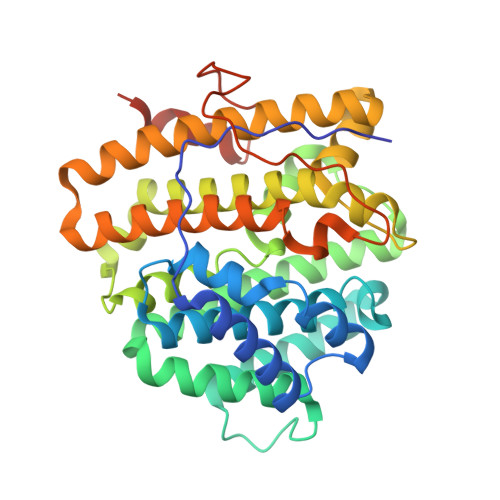Induced-fit mechanism in class i terpene cyclases.
Baer, P., Rabe, P., Fischer, K., Citron, C.A., Klapschinski, T.A., Groll, M., Dickschat, J.S.(2014) Angew Chem Int Ed Engl 53: 7652-7656
- PubMed: 24890698
- DOI: https://doi.org/10.1002/anie.201403648
- Primary Citation of Related Structures:
4OKM, 4OKZ - PubMed Abstract:
We present crystallographic and functional data of selina-4(15),7(11)-diene synthase (SdS) from Streptomyces pristinaespiralis in its open and closed (ligand-bound) conformation. We could identify an induced-fit mechanism by elucidating a rearrangement of the G1/2 helix-break motif upon substrate binding. This rearrangement highlights a novel effector triad comprising the pyrophosphate sensor Arg178, the linker Asp181, and the effector Gly182-O. This structural motif is strictly conserved in class I terpene cyclases from bacteria, fungi, and plants, including epi-isozizaene synthase (3KB9), aristolochene synthase (4KUX), bornyl diphosphate synthase (1N20), limonene synthase (2ONG), 5-epi-aristolochene synthase (5EAT), and taxa-4(5),11(12)-diene synthase (3P5R). An elaborate structure-based mutagenesis in combination with analysis of the distinct product spectra confirmed the mechanistic models of carbocation formation and stabilization in SdS.
Organizational Affiliation:
Center for Integrated Protein Science at the Department Chemie, Lehrstuhl für Biochemie, TU München (Germany).
















